Native Advertising Explained. What You Should Know in 2024.
Want to save time?
Summarize this article in seconds with AI
Native advertising is a form of paid media where the ad experience follows the natural form and function of the user experience in which it is placed. In this article, we'll explore what native advertising is, how it works, and why it is essential in 2024. Understanding native advertising trends can help businesses effectively integrate ads that blend seamlessly with content, enhancing user engagement.
What is native advertising?
Native advertising is a type of advertising that matches the form and function of the platform on which it appears. Unlike display ads or banner ads, native ads appear as part of the content. This makes native advertising less intrusive and more engaging for users, as native ads blend naturally with the surrounding content. This approach aims to make you more receptive and interested in the ad's content because it feels relevant and less like a traditional, disruptive advertisement. Some common native ads examples that you see on a daily basis are sponsored search results or social media posts.
Native Advertising Examples
1. Google Search
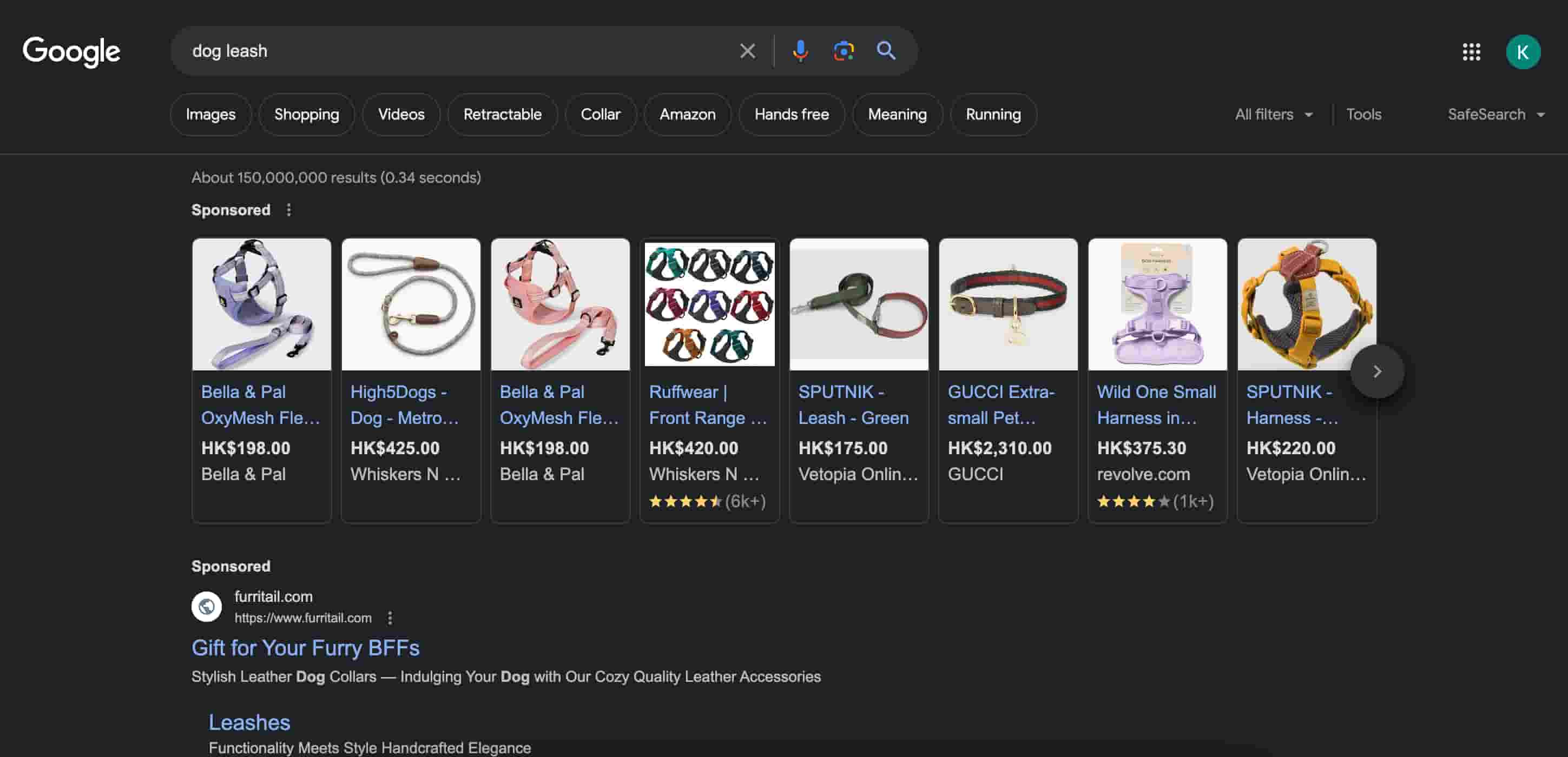
If you search anything on Google, you will be guaranteed to see some form of native ads in your search results. This is one of the most common native advertising examples. With this format, sponsored content that is directly related to the search phrase "dog leash" is shown at the top of the page. The variations here are product cards linking to different sites and text search results. This method is highly effective as it is exactly what the user is looking for, which significantly increases the engagement of the advertisements.
2. Facebook & Instagram
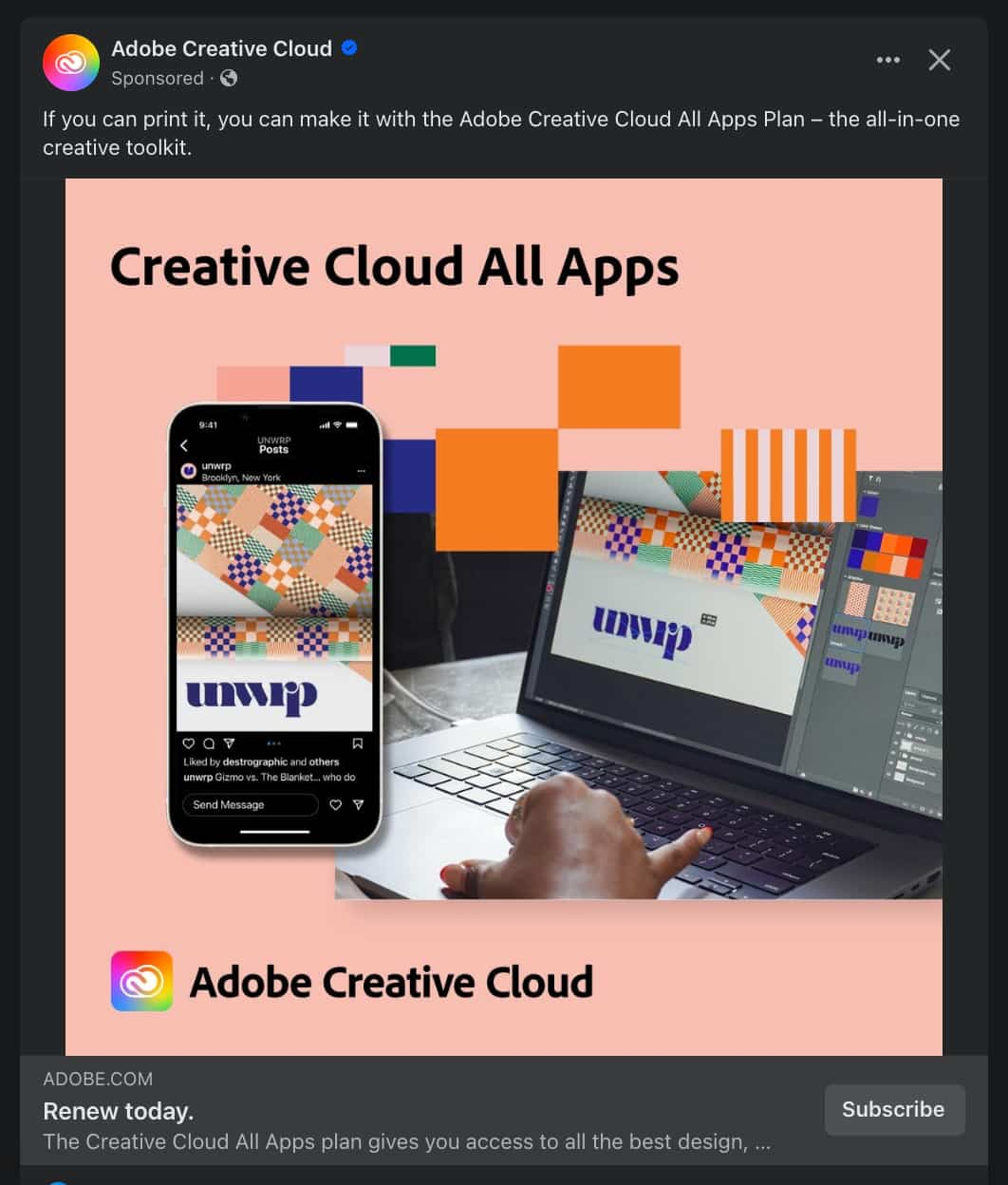
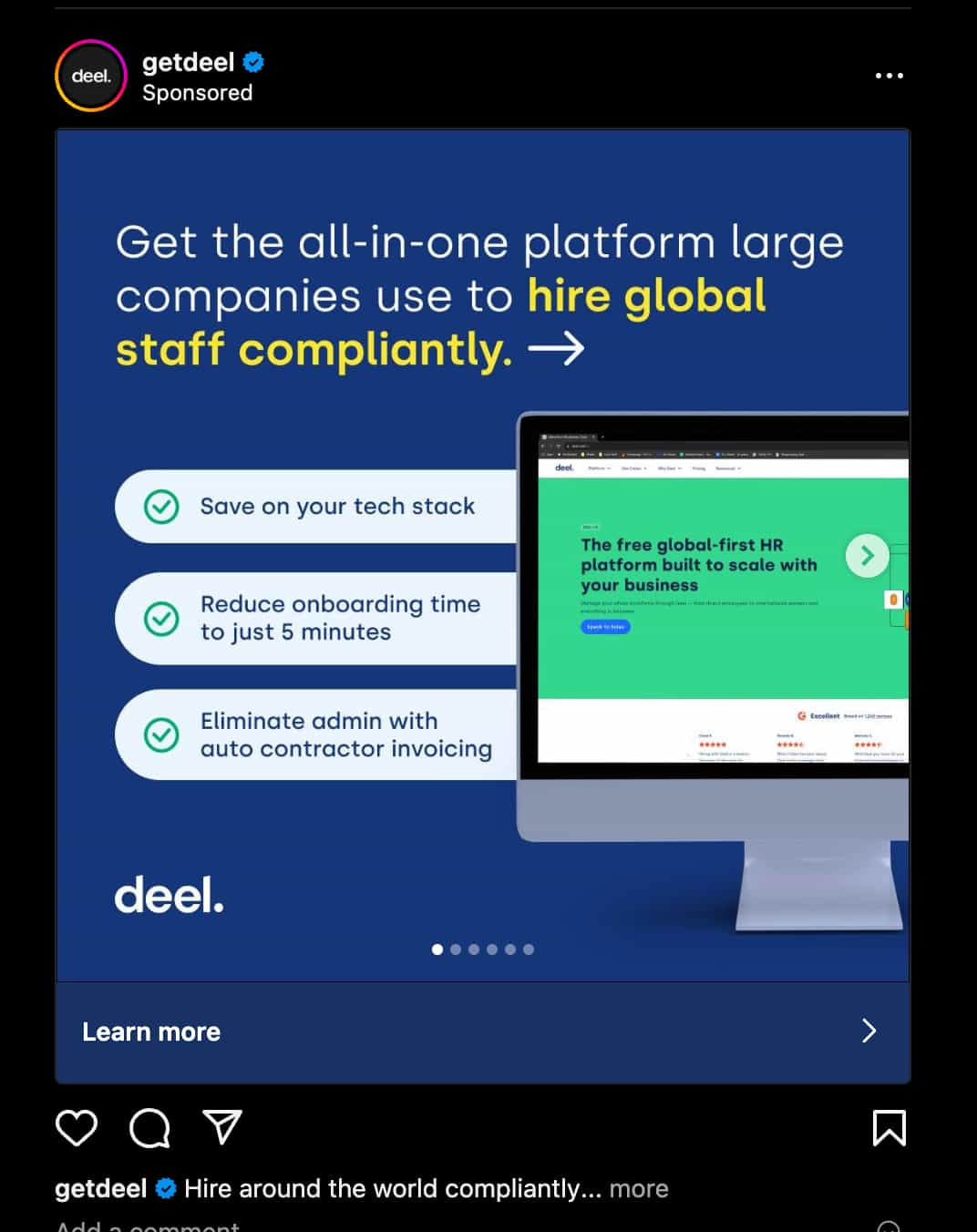
A second type of commonly seen native ads is social media "sponsored" content. These, unlike the Google native advertising example, are less directly targeted. Native ads on social media work based on the users' interest, viewing history and pattern, location, and many other factors based on data. Although this is more broad than the Google example, this type of content is still highly relevant to users. This sort of in-feed native ads can also be easily scrolled past in case the user is not interested, keeping low interruption in their viewing experience.
3. Kayak
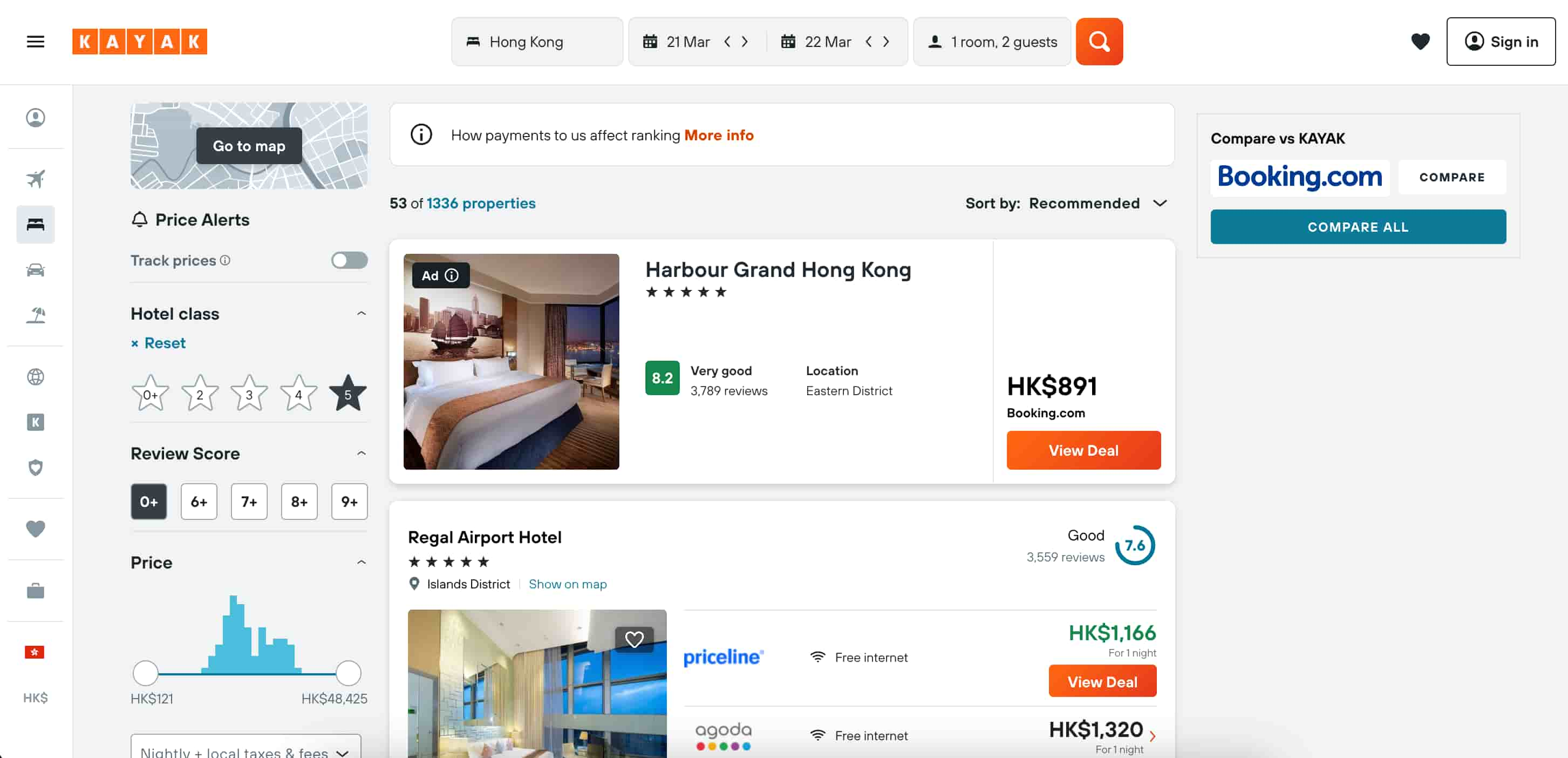
Similar to Google search results, marketplace and listing sites like Kayak have joined the native advertising trends and added it to their search function. Advertisers, in this case, pay Kayak to have their hotel featured at the top when users are searching for hotels with the parameters that match their offerings. The search result ad blends in seamlessly with the regular hotel listings so that viewers often don't notice the ads. It simply becomes part of the hotel options that are presented.
4. Foodpanda
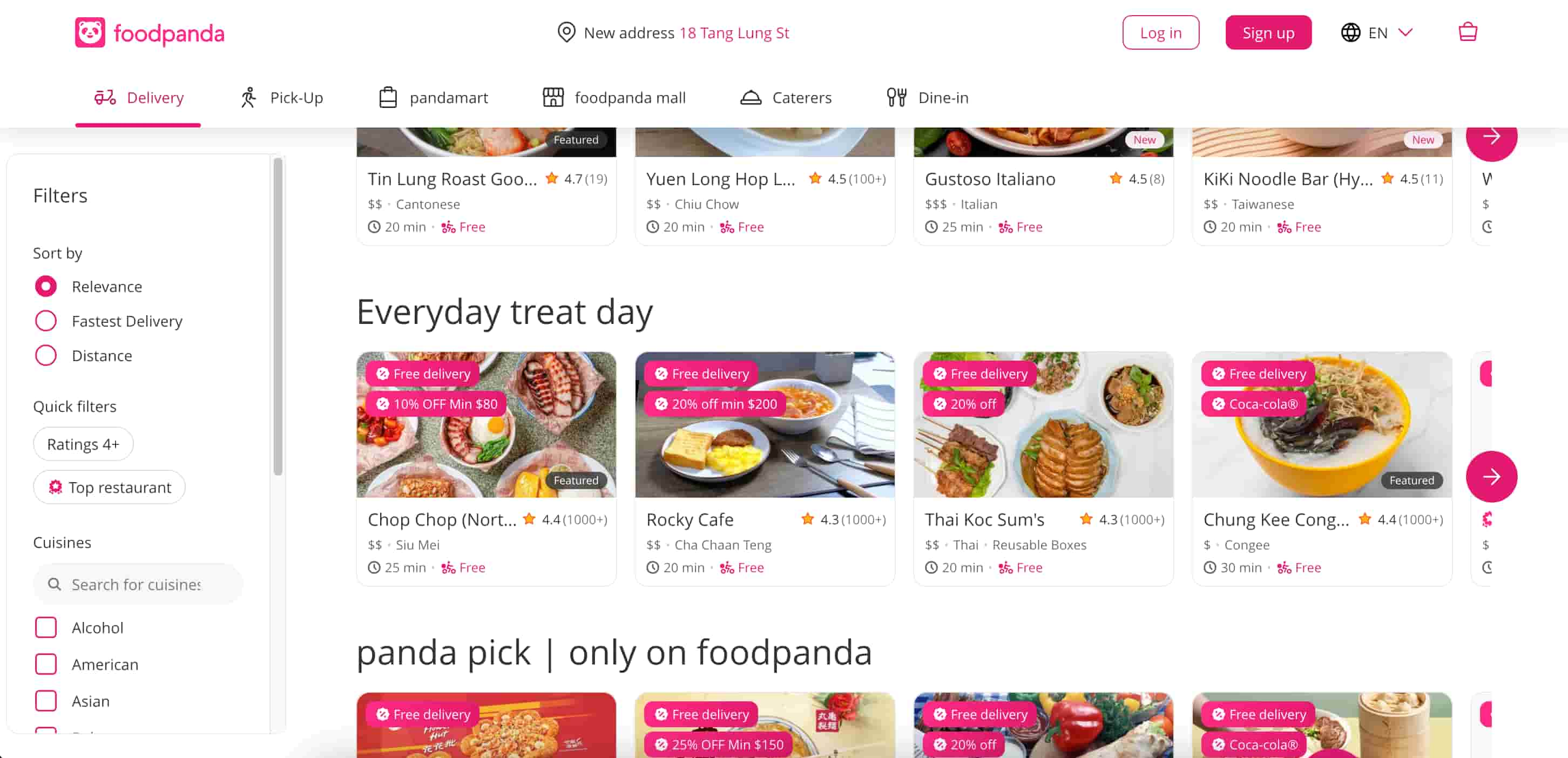
Food delivery sites like Foodpanda also have native ads incorporated into their "recommended" and search results. Restaurants can have their listing up as "featured" on the homepage and under different categories and subcategories. This native ad example on Foodpanda looks the same as all other restaurant listings, except for a small "featured" tag in the corner of the photo.
Native Advertising Network
Just like display advertising, you can buy ads directly with the sites or you can work with a native advertising network to have your ads scattered(strategically) throughout different sites. Platforms such as Google, Yahoo, and Taboola are popular among publishers(people who offer their sites for advertisements) and advertisers in the native ad space exchange.
Google offers a range of native advertising solutions that align ads with the style and context of a website's content, enhancing their appeal and effectiveness.
Yahoo's platform, known for its seamless content integration, allows ads to blend with site and app environments, providing targeted and engaging user experiences.
Taboola, on the other hand, focuses on content discovery, enabling advertisers to place their sponsored content where it's most likely to be relevant and engaging.
These, among many other native advertising networks, offer tools and networks that allow advertisers to create coherent, contextually relevant ads designed to resonate with and captivate the intended audience.
The Benefits of Native Advertising
- Improved User Experience: Native ads blend with the platform's content, offering a more seamless and less intrusive user experience.
- Enhanced Engagement: Due to their relevance and integration, native ads often achieve better engagement compared to traditional ads.
- Positive Brand Association: Well-executed native advertising can improve brand perception, associating the brand with valuable content.
The Disadvantages of Native Advertising
- Transparency Challenges: If not clearly disclosed, native ads can blur the line between content and advertising, potentially misleading the audience.
- Differentiation Difficulties: With the prevalence of native advertising, creating distinctive and memorable content can be challenging.
- Complex Metrics: Evaluating the effectiveness of native ads requires sophisticated tracking and analysis techniques.
Native Advertising Trends in 2025
As we move into 2025, several trends are emerging in native advertising. These include increased use of video content, greater personalization, and more sophisticated targeting techniques. Staying updated with native advertising trends is crucial for businesses to remain competitive and effectively reach their target audience. Understanding these trends helps in creating native ads that resonate more with users.
Conclusion
Native advertising is a powerful tool for businesses looking to integrate their ads seamlessly with content. By understanding how native advertising works and keeping up with the latest native advertising trends, you can create more engaging and effective campaigns. Whether you are focusing on native content or specific native ad formats, the key is to blend your advertising efforts naturally with user experiences.
 Cookie preferences
Cookie preferences








 Xiaohongshu Advertising Guide: How Can Hong Kong Brands Maximize Their Results?
Xiaohongshu Advertising Guide: How Can Hong Kong Brands Maximize Their Results?
 2x your advertising effectiveness: Master big data to optimize ad ROI
2x your advertising effectiveness: Master big data to optimize ad ROI
 Top 5 Best Ads in 2025 in Hong Kong
Top 5 Best Ads in 2025 in Hong Kong
 Hong Kong Outdoor Advertising Cost in 2026 | Adintime Report
Hong Kong Outdoor Advertising Cost in 2026 | Adintime Report
 Marketing Calendar 2026: Key Dates For Marketing Success
Marketing Calendar 2026: Key Dates For Marketing Success
 The Most Widely-Read Magazine and Newspaper in Hong Kong
The Most Widely-Read Magazine and Newspaper in Hong Kong
 Understanding YouTube Advertising Costs in 2025
Understanding YouTube Advertising Costs in 2025
 OOH /DOOH advertising in Hong Kong: Formats and Rates (2025 Update)
OOH /DOOH advertising in Hong Kong: Formats and Rates (2025 Update)
 How much does LinkedIn Advertising Cost? (2025 Update)
How much does LinkedIn Advertising Cost? (2025 Update)
 Press Ad Basics: Types, Formats and Ad Price
Press Ad Basics: Types, Formats and Ad Price